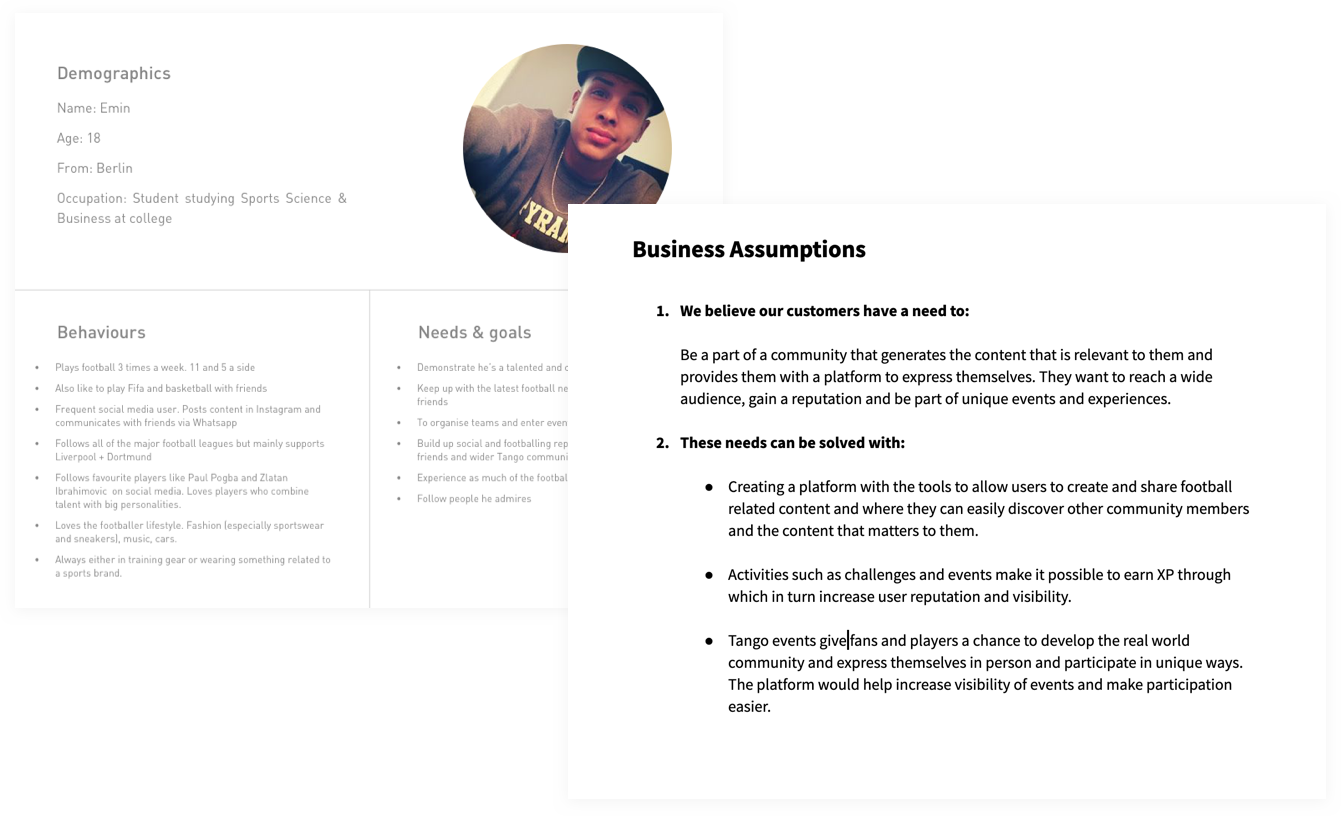Adidas - Tango app
Project Overview
Working with a couple of different product teams in just over a year at adidas, starting with work on a football community app then moving on their e-commerce mobile app to look at the customer area and a brand new loyalty scheme they were introducing.
- Study feasibility of a new football community model and mapping of content creation and interactions
- Primary research, wireframes, UIs, and prototypes to test the model with users
- Map journeys and create the information architecture for a new membership scheme
- Design design new GDPR compliance and customer loyalty program flows in iOS & Android apps
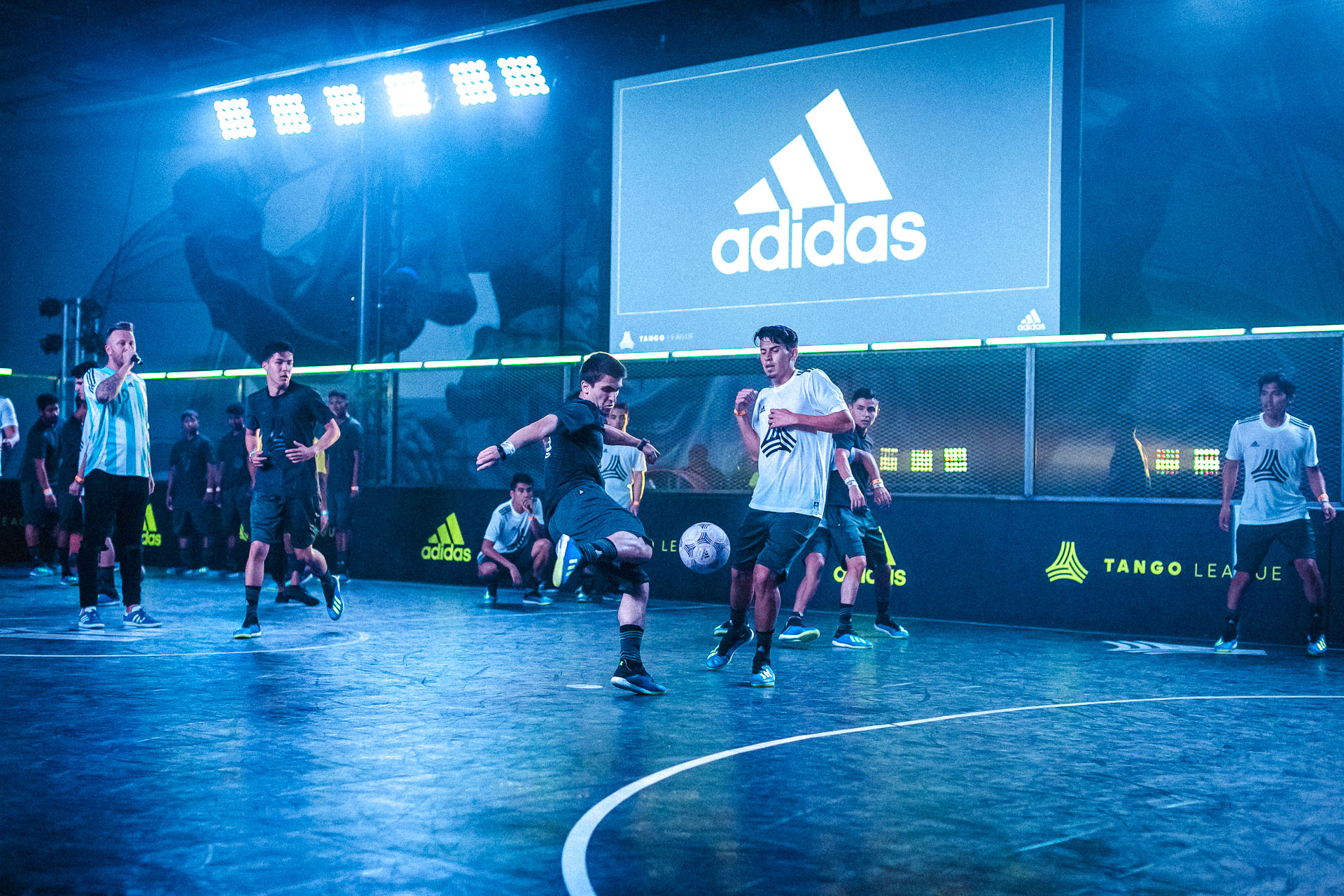
Mapping a new online community
adidas run a series of football events globally called Tango League where players aged 16-25 compete to earn the chance of a boot deal and a place on adidas' flagship team. The league uses social media and an influencer type model to communicate with fans and aspiring players.
My first job at adidas was to look into the feasibility and potential structure of a community that would be built on top of the existing adidas Tango app by conducting user research, benchmarking, mapping journeys, and producing designs to be tested with users.
The major question we had was is there the space and need for a new social community app on top of what people already used.
First round research & definition
We needed more insight into the current state of social media platforms, particularly the ones we know our target audience uses. So the first two things we did were to conduct competitor/industry analysis and I also attended a Tango event in Berlin to talk with some of the players and organisers about their experiences and digital habits.
This combined with some insights we already had on our users and the market allowed us to produce to initial insights and assumptions to validate as we went along.
- Key outcomes:
- Interviews with players about what Tango means to them, how they use the app, and their current social media habits
- Three Lean Personas (Player, Fan, & Prospect) based on our interviews and what we knew about our existing users
- A set of Lean Business Assumptions to give us a basic insight into competitors, threats, customer acquisition etc
- Benchmarking of features & structure of major social media platforms plus some sports-specific platforms on the market
Mapping a community structure
Based on our research of the market we then began to put together ideas for how a community could work, what kinds of content could be generated, and a what the relationships would be formed.
This was mainly in the form of brainstorming with a couple of stakeholders and then structuring the results into something we could begin investigating.
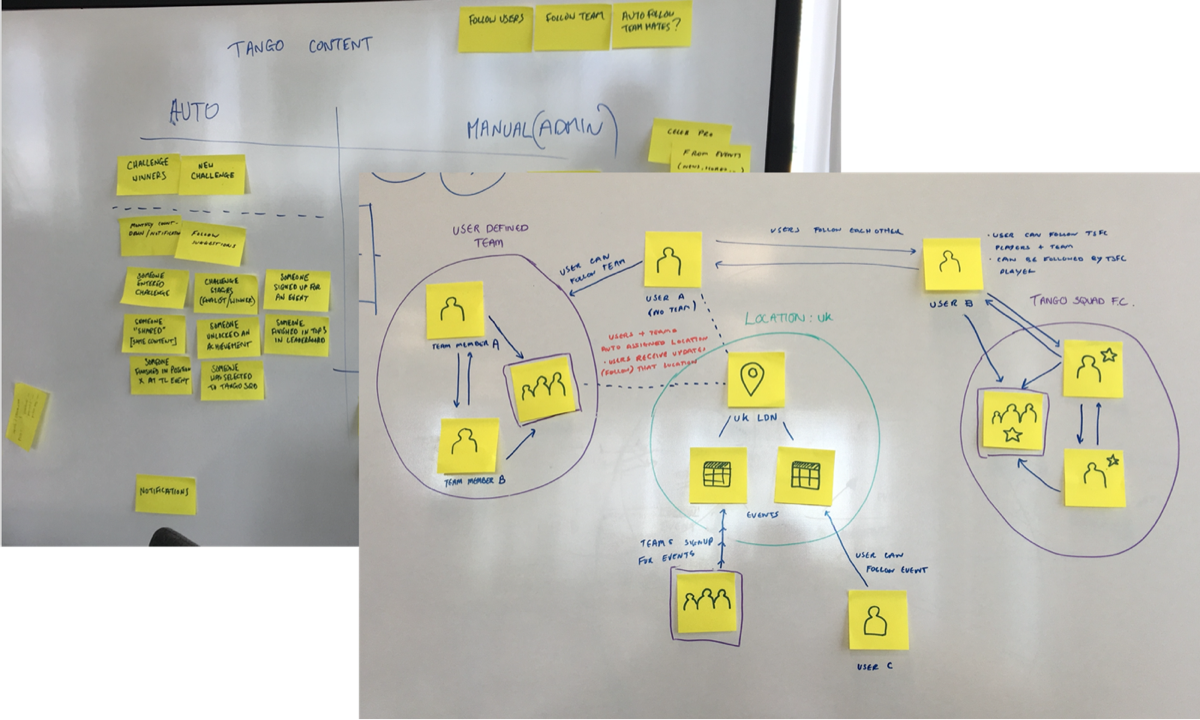
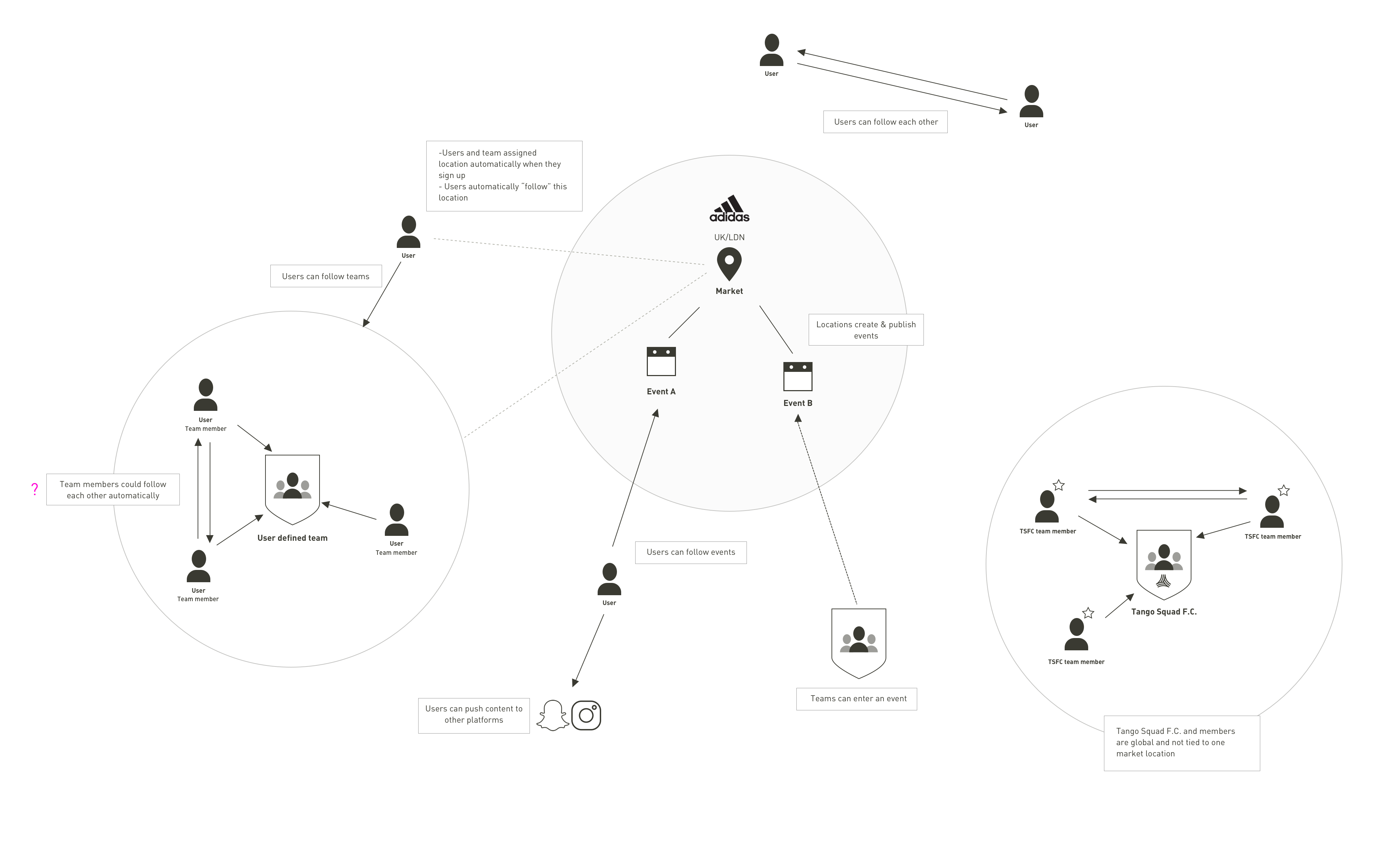
Testing our assumptions
We had some idea of what the community could look like so we wanted to validate some of our ideas with Tango users and get some input on our early direction. So we arranged a session in London with some Tango League members were we set up a card sorting exercise designed to discover the kind of content they would share, which channels/mediums they would share them on, and their first impressions of an early prototype.
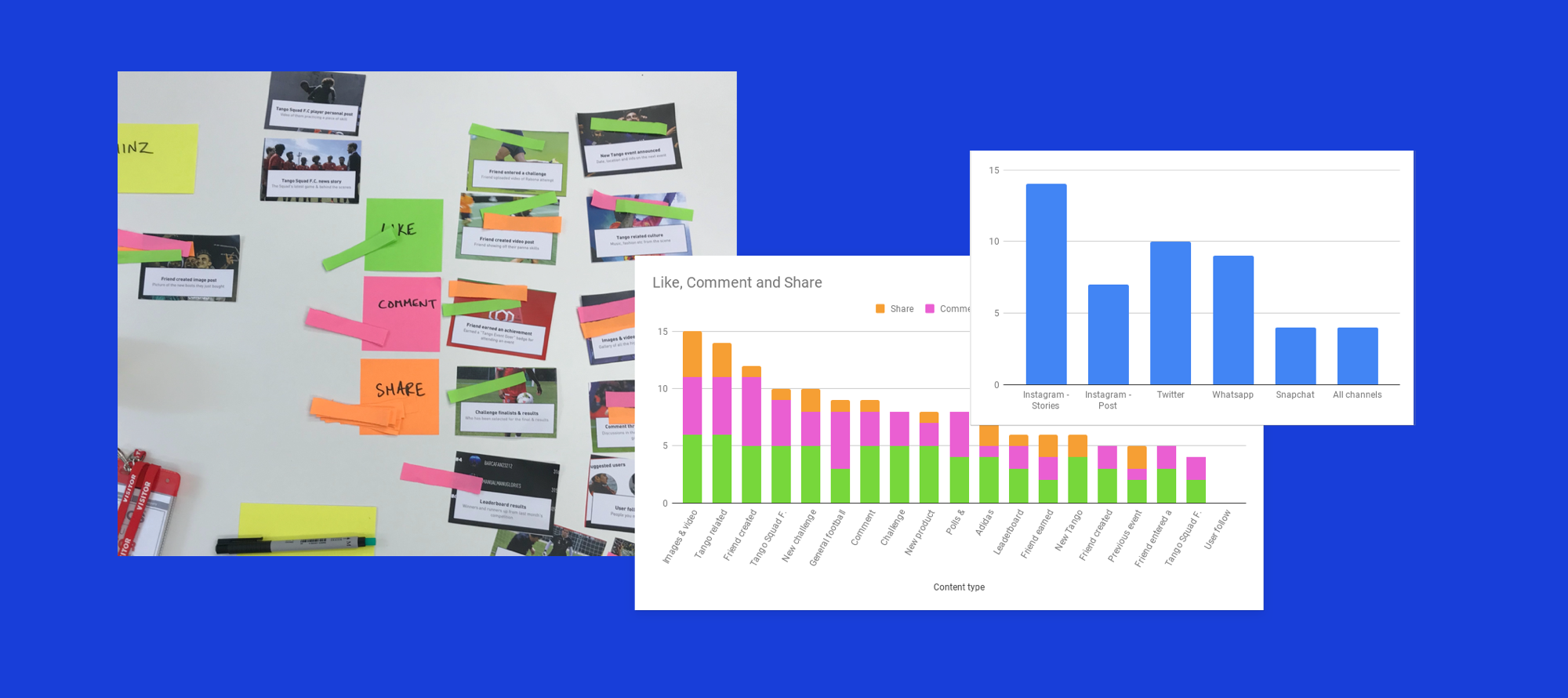
Design Exploration
In the first user sessions, we established the types of content users would like to see and also gathered some more insights into a solution so we were able to move on to the next stages designing and prototyping.
This involved exploring models that could best serve the content and make the experience stand out. Some ideas included:
- Purely fullscreen video posts and content. TikTok was relatively new on the market and we thought the model could work well with our audience.
- Chat group style interactions where teams and fans join a group and are able to receive updates and comments on posts. Events, teams, regions could all be divided in to separate chats that users followed or they could start their own.
- The idea of time-limited content was also looked at as Instagram stories was the primary method of sharing content for much of the audience we tested with and content already being generated for the app such as skill challenges fit this model.
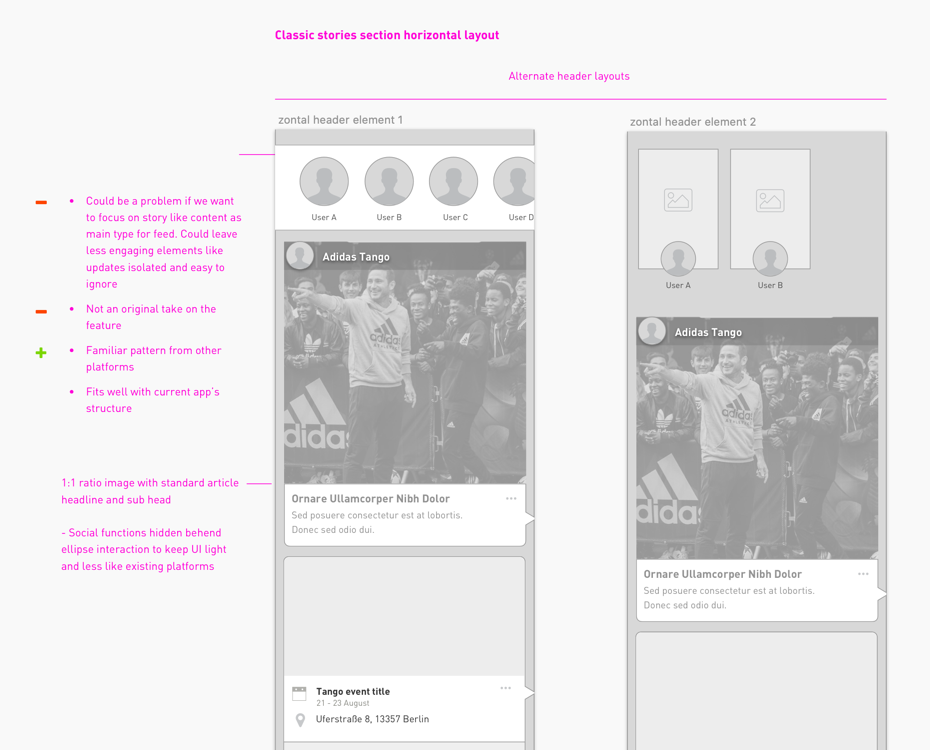
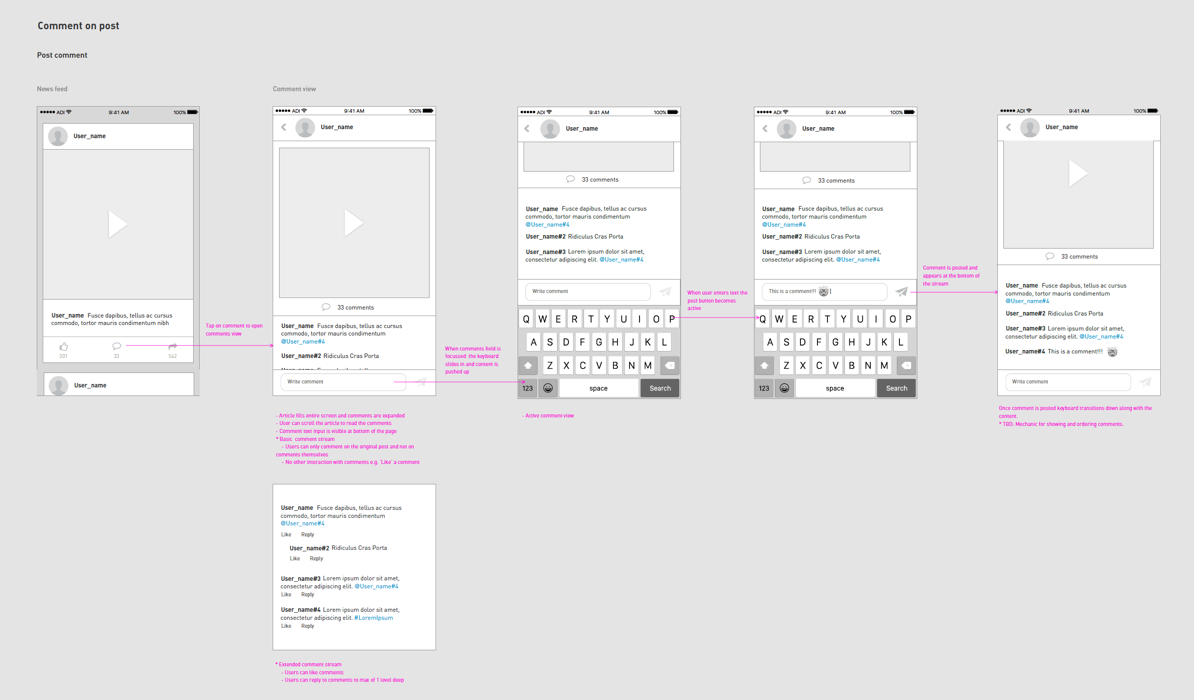
Visuals & High-fidelity Prototypes
As we worked on the project we realised a phased approach was the only way to get to where we needed to be. So with this in mind, our first step was to address the immediate problems outlined in our hypotheses while not making huge changes to the existing calendar model and without removing features and functions restaurants had got used to over the years and which would need a large effort from a development point of view.
So with this in mind we made several changes while leaving the basic structure in place to phase out the old calendar when we had evidence our changes were working:
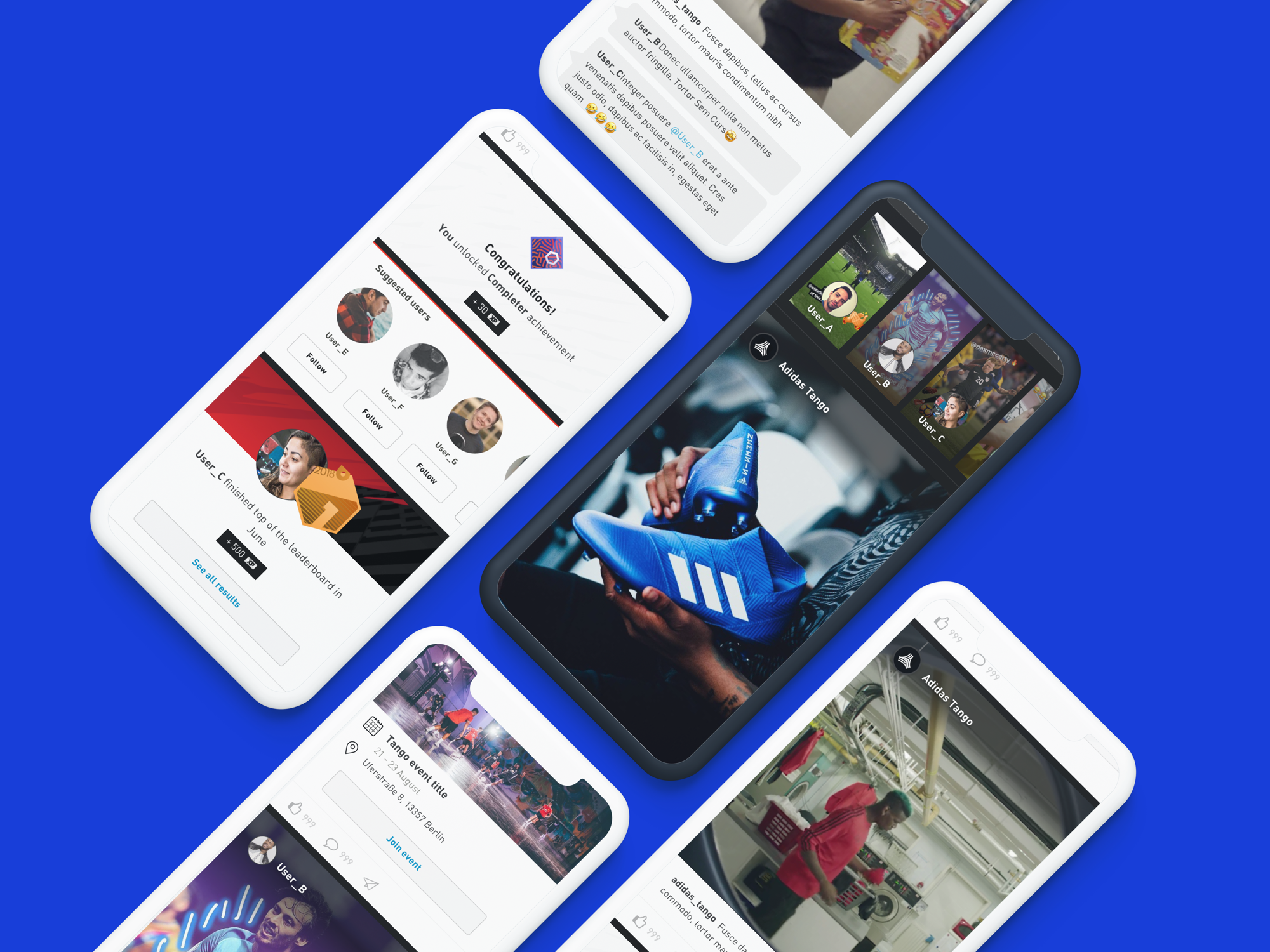
The Results
We gathered our designs and insights and produced a road-map for building upon the current app and moving toward something more engaging and which had a more self-sustaining content model. This mapped out what minimal changes could be made first to augment the current experience, such as adding comments, with a view to introducing new, bolder changes as we continually monitor whether this community platform concept was benefiting both users and the business.
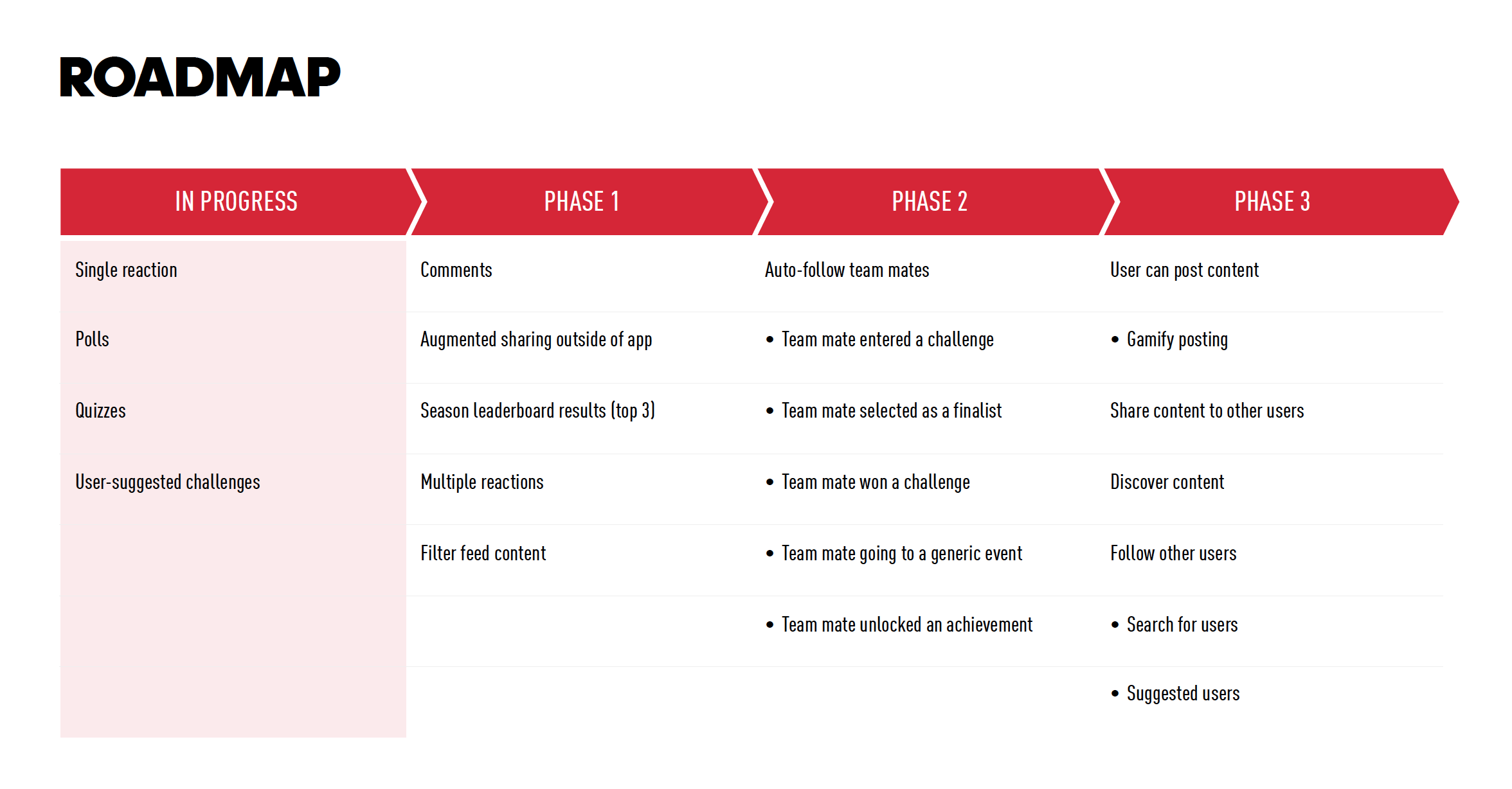
Although the department management and product owners liked the concepts and the insights, it was later decided that the community was not a priority at that time partly down to there being too much crossover with existing platforms that fans and players were already using but also because of a more general level of uncertainty about the future of the Tango app as something the department was committed to.
We worked as quickly as possible and used minimal methods to gather feedback and develop the research so we were happy we'd made a good case but also understood as the project went on that there were opportunity costs to pursuing this approach from a business standpoint.
